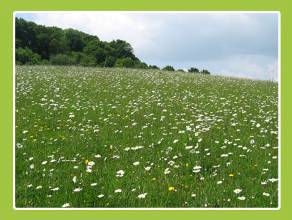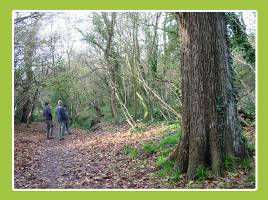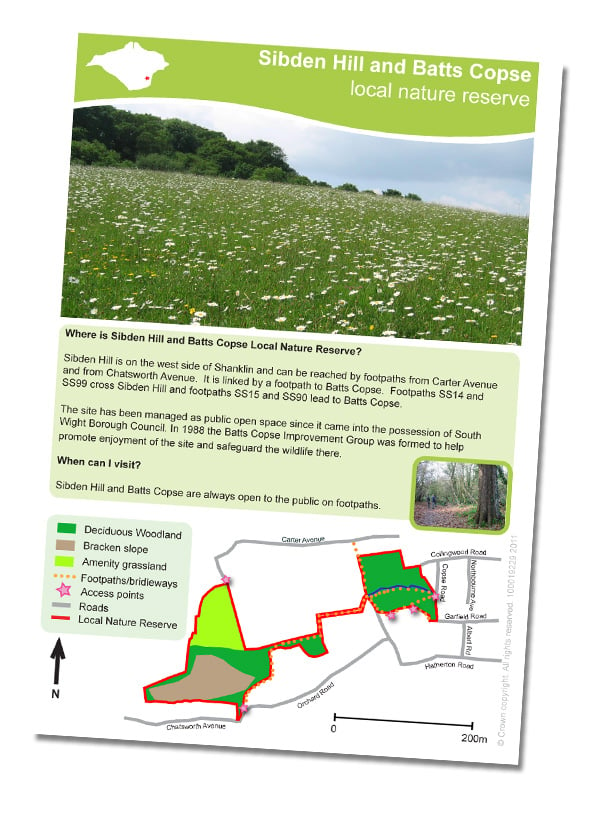SIBDEN HILL AND BATTS COPSE
Where is Sibden Hill and Batts Copse Local Nature Reserve?
The reserve is on the west side of Shanklin and can be reached by footpaths from Carter Avenue and from Chatsworth Avenue. It is linked by a footpath to Batts Copse. Footpaths SS14 and SS99 cross Sibden Hill and footpaths SS15 and SS90 lead to Batts Copse.
When can I visit Sibden Hill and Batts Copse Local Nature Reserve?
Sibden Hill and Batts Copse are always open to the public on footpaths.
What makes Sibden Hill and Batts Copse Local Nature Reserve so special?
| Sibden Hill rises to 95.8 m above sea level and slopes to the south. Drainage is good due to the permeability of the sandy soils. In 1793, the tithe maps recorded Sibden Hill as rough grassland with the surrounding area being agricultural. By 1842, this land was described as pasture and twenty years later the first areas of scrub are mapped at the top of the hill. In 1908 the land was described as `rough grass`. The present day vegetation includes woodland, scrub, bracken-dominated acid grassland and amenity grassland. |  |
The woodland is dominated by hazel on the eastern edge of the site with some garden escapes invading, including hydrangea and rhododendron. Moving west, the hazel becomes thinner and mixed woodland of oak, sycamore, hazel, elm, ash, beech and silver birch is found on the top of the hill with some hawthorn, blackthorn, rhododendron and gorse. There is elm scrub at the far west end of the site.
The ground flora is dominated by bracken and bramble. Resident birds include garden species such as blackcap and treecreeper, and passage migrants such as goldcrest, siskin, linnet and mistle thrush may be seen.
The ground flora is dominated by bracken and bramble. Resident birds include garden species such as blackcap and treecreeper, and passage migrants such as goldcrest, siskin, linnet and mistle thrush may be seen.
There is some unimproved acid grassland almost completely covered by bracken, interspersed with areas of gorse, bramble and rhododendron. This bracken cover has an understorey of bluebell, sheep’s sorrel, greater stitchwort, rosebay willowherb and red campion. In clearer areas, honeysuckle, foxglove and sheep’s sorrel dominate the flora. The amenity grassland on the western slopes is mown for recreational purposes.
Batts Copse nestles in the relatively steep-sided valley of a small brook, part of which has been modified to accommodate a pipe. The woodland through the gorge is heavily shaded and the ground flora consists of harts tongue and male fern, nettle, bramble and cleavers. The wood south of the gorge, however has a longer history and the ground flora includes wood anemone, bluebell, ransoms and pendulous sedge. The three cornered leek is a distinctive plant in late spring and early summer.
 | The canopy on this side of the stream is largely old, with wide spreading hazel and some oak standards. The northern part of the woodland is dominated by sycamore and wild cherry. The woodland is home to a variety of mammals including fox, bats, and hedgehog. Badger and red squirrel are known to visit the site |
Scrub areas in Batts Copse have been cleared and planted with hazel and silver birch. The scrub attracts redwing, greenfinch, bullfinch and song thrush. There are also grass snakes, slowworms, common frog and common toad.
The site has been managed as public open space since it came into the possession of South Wight Borough Council. In 1988 the Batts Copse Improvement Group was formed to help promote enjoyment of the site and safeguard the wildlife there.
| You can download a Sibden Hill and Batts Copse factsheet here which contains a map of the site and things to look out for during your visit. Click here if you would like to find out more about getting involved with your local nature reserve. |  |
Page last updated on: 24/03/2011





